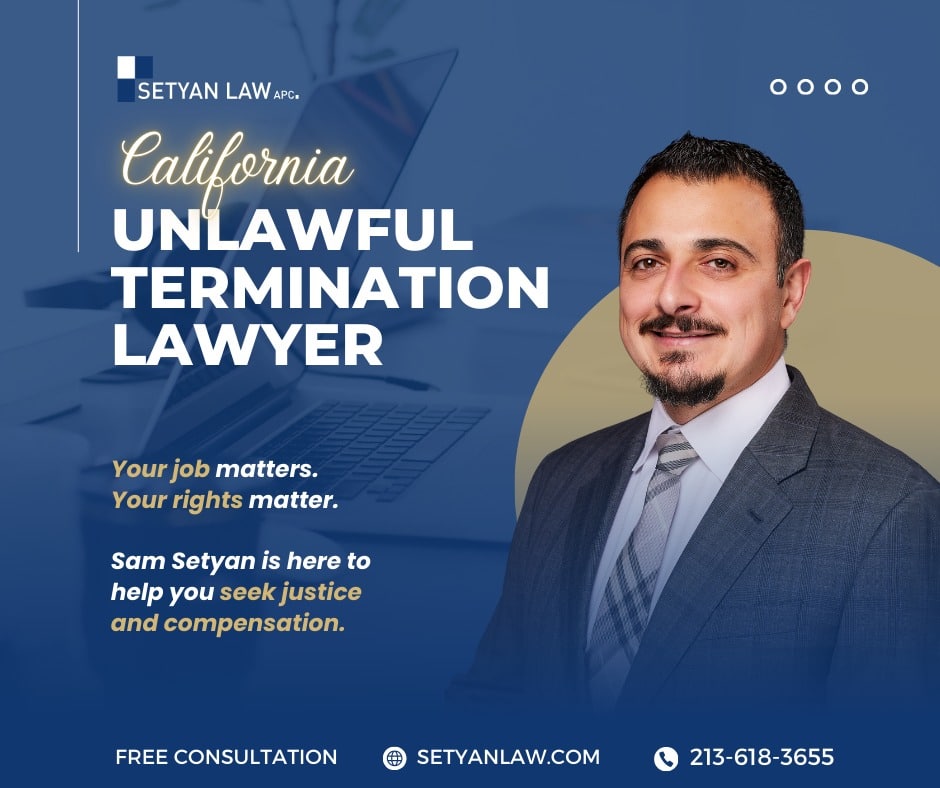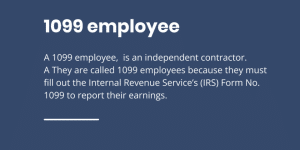Updated March 14, 2025
How Often are Wrongful Termination Cases Won?
Losing a job can be a devastating experience, especially when you believe the termination was unjust or illegal. In California, employees have certain protections against wrongful termination, but navigating the legal landscape can be challenging. This comprehensive guide explores the success rates of wrongful termination cases, factors that influence outcomes, and steps you can take to strengthen your position if you find yourself in this difficult situation.
Wrongful termination occurs when an employee is fired for reasons that violate state or federal laws. While California is an at-will employment state, meaning employers can generally terminate employees for any reason or no reason at all, there are important exceptions. Understanding these exceptions and the overall landscape of wrongful termination cases is crucial for both employees and employers.
The success rate of wrongful termination cases varies widely depending on numerous factors. However, with proper legal guidance and a strong case, many employees are able to achieve favorable outcomes. Let’s delve into the key aspects that influence the success of these cases and what you need to know to protect your rights under California law.
Settlement Rates, Legal Representation, Compensation and More
Wrongful termination cases, while potentially complex, can yield favorable outcomes for employees, with a high percentage settling before trial, and those with legal representation having a higher chance of receiving compensation. Here’s a more detailed breakdown:
1. Settlement Rates:
A significant portion of wrongful termination cases, estimated around 90%, settle before reaching trial.
2. Legal Representation:
Working with an attorney can significantly increase the likelihood of receiving compensation, with one survey finding that 64% of those with legal representation received compensation, compared to 30% without.
3. Compensation:
Successful wrongful termination cases can result in compensation for lost wages, damages for emotional distress, and potentially punitive damages.
4. Common Grounds for Claims:
Some common examples of wrongful termination include retaliation for workers’ compensation claims, reporting sexual harassment, age or racial discrimination, whistleblower retaliation, and violations of the Family and Medical Leave Act (FMLA).
5. Proving Wrongful Termination:
To prove wrongful termination, evidence can be direct (clear proof of illegal termination) or circumstantial (evidence suggesting illegal termination).
6. California Specifics:
Wrongful termination settlements can range widely from on average between $5,000 to $100,000 and upwards from there.
Defining Wrongful Termination in California
Wrongful termination in California encompasses a range of situations where an employee’s firing violates legal protections. These protections stem from various sources, including state and federal statutes, public policy, and employment contracts. Understanding what qualifies as wrongful termination is the first step in assessing the potential success of a case.
Common grounds for wrongful termination claims include:
- Discrimination based on protected characteristics (e.g., race, gender, age, disability)
- Retaliation for engaging in protected activities (e.g., whistleblowing, filing a complaint)
- Violation of public policy (e.g., refusing to engage in illegal activities)
- Breach of an implied or express employment contract
- Constructive discharge (forced resignation due to intolerable working conditions)
It’s important to note that not all unfair or unpleasant terminations are necessarily illegal. The termination must violate specific laws or contractual obligations to qualify as wrongful termination under California law.
Factors Influencing Wrongful Termination Case Outcomes
The success of a wrongful termination case depends on various factors. Understanding these elements can help you gauge the strength of your case and take appropriate action:
Evidence Quality: The strength and availability of evidence is paramount. This may include documentation of discriminatory comments, performance reviews, witness statements, and communication records.
Legal Representation: Having an experienced employment attorney can significantly impact the outcome. Skilled lawyers understand the nuances of California employment law and can build a compelling case.
Employer’s Response: The employer’s actions before and after the termination, including their willingness to negotiate or settle, can affect the case’s trajectory.
Jurisdiction and Judge: The specific court and judge overseeing the case can influence its outcome, as different jurisdictions may interpret laws slightly differently.
Employee’s Work History: A strong performance record and clean disciplinary history can bolster an employee’s case.
Timeliness of Action: Filing claims within the statute of limitations and following proper procedures is crucial for maintaining legal rights.
Severity of Violation: Cases involving clear violations of law or egregious employer conduct often have higher success rates.
Understanding these factors can help you assess the potential strength of your case and make informed decisions about how to proceed.
Statistical Insights on Wrongful Termination Case Success Rates
While exact success rates for wrongful termination cases can be difficult to pinpoint due to the variety of case types and outcomes, some studies and surveys provide valuable insights:
According to a survey by Nolo, a legal information website, approximately 64% of employees who worked with an attorney received a settlement or award, with an average compensation of $48,800.
The same survey found that employees who did not hire an attorney were successful in only 30% of cases, with an average settlement of $19,200.
A study by Martindale-Nolo Research revealed that 43% of wrongful termination plaintiffs received compensation through settlements or court awards.
Cases with both witness testimony and written evidence had the highest success rate at 63%, compared to 50% for cases with only written evidence and 28% for those with only witness testimony.
These statistics highlight the importance of gathering strong evidence and seeking professional legal representation to maximize the chances of a favorable outcome in wrongful termination cases.
The Role of Evidence in Case Success
The quality and quantity of evidence play a crucial role in determining the success of a wrongful termination case. Strong evidence can significantly increase the likelihood of a favorable outcome, whether through settlement or court verdict. Here are key types of evidence that can strengthen a wrongful termination claim:
Written Documentation: This includes emails, memos, performance reviews, and company policies that support your claim of wrongful termination.
Witness Testimony: Statements from colleagues or supervisors who can corroborate your version of events can be powerful evidence.
Performance Records: A history of positive performance evaluations can counter claims of termination for poor performance.
Communication Records: Documented conversations or meetings related to your termination or the events leading up to it can provide crucial context.
Comparative Evidence: Information showing disparate treatment compared to other employees in similar situations can support claims of discrimination.
Financial Records: Documentation of lost wages and benefits can help quantify damages in successful cases.
Gathering and preserving this evidence as soon as possible after termination is crucial. An experienced employment attorney can help you identify and compile the most relevant evidence to support your case.
The Impact of Legal Representation on Case Outcomes
The decision to hire an attorney can significantly influence the outcome of a wrongful termination case. Legal representation provides several advantages:
Expertise in Employment Law: Attorneys specializing in employment law understand the complexities of California’s legal system and can navigate it effectively.
Case Evaluation: Experienced lawyers can assess the strength of your case and provide realistic expectations about potential outcomes.
Negotiation Skills: Attorneys can often negotiate more favorable settlements with employers or their legal representatives.
Procedural Knowledge: Lawyers ensure that all necessary legal procedures are followed correctly, avoiding potential pitfalls that could weaken your case.
Resource Access: Law firms have access to resources like expert witnesses and investigative tools that can strengthen your case.
Courtroom Experience: If your case goes to trial, having an attorney with litigation experience can be crucial for presenting your case effectively.
The statistics mentioned earlier clearly show that employees with legal representation tend to have higher success rates and larger settlements in wrongful termination cases. This underscores the importance of seeking professional legal advice when facing a potential wrongful termination situation.
Common Reasons for Unsuccessful Wrongful Termination Claims
Understanding why some wrongful termination claims fail can help you avoid common pitfalls and strengthen your case. Here are some frequent reasons for unsuccessful claims:
Lack of Evidence: Without sufficient documentation or witness testimony, it can be challenging to prove wrongful termination.
Misunderstanding of At-Will Employment: Many employees don’t realize that in California, at-will employment allows termination without cause in many situations.
Missed Deadlines: Failing to file claims within the statute of limitations can result in the loss of legal rights.
Inability to Prove Discrimination or Retaliation: Claims based on these grounds require clear evidence linking the protected characteristic or activity to the termination decision.
Legitimate Business Reasons: If the employer can demonstrate a valid, non-discriminatory reason for termination, it can be difficult to prove wrongful termination.
Inadequate Documentation: Poor record-keeping of incidents, conversations, and performance issues can weaken a case.
Inconsistent Statements: Providing conflicting accounts of events can damage credibility and weaken the overall case.
Failure to Follow Company Procedures: Not utilizing internal complaint processes or following company policies can sometimes undermine a wrongful termination claim.
By being aware of these common pitfalls, you can take proactive steps to build a stronger case if you believe you’ve been wrongfully terminated.
Steps to Take If You Believe You’ve Been Wrongfully Terminated
If you suspect that you’ve been wrongfully terminated, taking prompt and appropriate action can significantly impact the success of your potential case. Here are essential steps to consider:
Document Everything: Write down a detailed account of the events leading to your termination, including dates, times, and names of individuals involved.
Gather Evidence: Collect any relevant documents, emails, or other materials that support your claim. Be cautious not to take confidential company information.
Review Your Employment Contract: Carefully read your employment agreement and any company policies to understand your rights and obligations.
File an Internal Complaint: If your company has a grievance process, consider using it to formally document your concerns.
Consult an Employment Attorney: Seek legal advice as soon as possible to understand your rights and the strength of your potential case.
File a Complaint with Appropriate Agencies: Depending on the nature of your claim, you may need to file with agencies like the Equal Employment Opportunity Commission (EEOC) or the California Department of Fair Employment and Housing (DFEH).
Maintain Professionalism: Avoid making public statements or discussing your case on social media, as this could potentially harm your claim.
Consider Alternative Dispute Resolution: Mediation or arbitration might be options for resolving your dispute without going to court.
Prepare for a Job Search: While pursuing your legal options, also prepare for future employment opportunities.
Taking these steps can help protect your rights and strengthen your position if you decide to pursue a wrongful termination claim.
The Role of Settlement in Wrongful Termination Cases
Many wrongful termination cases are resolved through settlements rather than going to trial. Understanding the settlement process and its implications is crucial:
Prevalence of Settlements: A significant majority of wrongful termination cases (estimated at over 90%) settle before reaching trial.
Advantages of Settling: Settlements often provide quicker resolution, lower legal costs, and guaranteed compensation compared to the uncertainties of a trial.
Negotiation Process: Settlements typically involve negotiations between your attorney and the employer’s representatives, often through mediation.
Confidentiality Clauses: Many settlements include confidentiality agreements, limiting what you can disclose about the case and its resolution.
Tax Implications: Settlement amounts may have different tax treatments depending on how they are structured. Consult with a tax professional for guidance.
Release of Claims: Settling usually requires you to release the employer from further legal claims related to your employment and termination.
Non-Monetary Terms: Settlements may include non-monetary provisions such as neutral references or agreement not to contest unemployment benefits.
Timing of Settlements: Settlements can occur at various stages, from pre-litigation negotiations to just before or during trial.
Understanding these aspects of settlements can help you make informed decisions if you’re presented with a settlement offer in your wrongful termination case.
Legal Protections for California Employees
California offers some of the strongest employee protections in the United States. Understanding these laws can help you recognize potential violations and protect your rights:
Fair Employment and Housing Act (FEHA): This law prohibits discrimination based on protected characteristics such as race, gender, age, disability, and sexual orientation.
California Labor Code: This comprehensive set of laws governs various aspects of employment, including wage and hour regulations, leave policies, and termination procedures.
Whistleblower Protection Act: This law protects employees who report illegal activities or safety violations within their organization.
California Family Rights Act (CFRA): Similar to the federal FMLA, this law provides job-protected leave for certain family and medical reasons.
Pregnancy Disability Leave Law: This law provides additional protections for pregnant employees beyond those offered by CFRA and FMLA.
Worker’s Compensation Laws: These laws protect employees from retaliation for filing worker’s compensation claims.
California WARN Act: This law requires employers to provide advance notice of mass layoffs or plant closings.
Local Ordinances: Many California cities and counties have additional employment protections that may apply to your situation.
Familiarizing yourself with these laws can help you identify potential violations and understand your rights in the workplace.
The Impact of Recent Legal Developments on Wrongful Termination Cases
Employment law is continually evolving, and recent legal developments can significantly impact wrongful termination cases in California. Staying informed about these changes is crucial for both employees and employers:
Expansion of Protected Categories: Recent legislation has expanded the list of protected characteristics under anti-discrimination laws, including traits historically associated with race.
Changes in Independent Contractor Classification: The implementation of AB 5 and subsequent modifications have altered how workers are classified, potentially affecting wrongful termination claims for misclassified employees.
Pandemic-Related Protections: New laws and regulations related to COVID-19 have introduced additional protections against termination for reasons related to the pandemic.
Arbitration Agreement Restrictions: Recent laws have placed limitations on mandatory arbitration agreements in employment contracts, potentially affecting how wrongful termination cases are resolved.
Enhanced Whistleblower Protections: Strengthened laws provide greater protection for employees who report illegal activities or safety violations.
Expanded Leave Rights: New laws have expanded employee rights to various types of leave, including paid sick leave and family leave.
Increased Penalties for Labor Code Violations: Recent legislation has increased potential penalties for employers who violate certain labor laws.
These developments can significantly impact the landscape of wrongful termination cases, potentially affecting both the grounds for claims and the potential outcomes.
Strategies for Employers to Prevent Wrongful Termination Claims
While this article primarily focuses on employee rights, it’s also important for employers to understand how to prevent wrongful termination claims. Implementing best practices can help reduce the risk of legal issues:
Develop Clear Policies: Create and communicate clear, written policies regarding performance expectations, disciplinary procedures, and termination processes.
Provide Regular Training: Offer ongoing training to managers and supervisors on employment laws and proper termination procedures.
Document Performance Issues: Maintain thorough records of performance evaluations, disciplinary actions, and any discussions related to employee performance.
Conduct Fair Investigations: When issues arise, conduct thorough and impartial investigations before making termination decisions.
Ensure Consistent Application of Policies: Apply company policies consistently across all employees to avoid claims of discriminatory treatment.
Offer Progressive Discipline: When appropriate, use a system of progressive discipline that gives employees opportunities to improve before termination.
Review Termination Decisions: Have a process for reviewing termination decisions, possibly involving HR or legal counsel, to ensure compliance with laws and company policies.
Consider Severance Agreements: In some cases, offering a severance agreement in exchange for a release of claims can help prevent future legal action.
Stay Informed About Legal Changes: Keep abreast of changes in employment law and adjust policies and practices accordingly.
By implementing these strategies, employers can create a fairer workplace environment and reduce the likelihood of facing wrongful termination claims.
Conclusion: Navigating the Complexities of Wrongful Termination Cases
Wrongful termination cases in California present a complex landscape with varying success rates influenced by numerous factors. While statistical data shows that many cases result in favorable outcomes for employees, especially those with legal representation, each situation is unique and requires careful consideration.
Key takeaways for employees facing potential wrongful termination include:
Understand Your Rights: Familiarize yourself with California employment laws and your specific employment agreements.
Act Promptly: Time is often critical in these cases, both for preserving evidence and meeting legal deadlines.
Seek Professional Advice: Consulting with an experienced employment attorney can significantly impact your case’s outcome.
Document Everything: Maintain detailed records of all relevant events, communications, and documents.
Consider All Options: Be open to various resolution methods, including negotiation, mediation, and litigation.
For employers, the focus should be on prevention through clear policies, consistent practices, and ongoing education about employment laws.
Navigating a wrongful termination situation can be challenging, but understanding your rights, the legal landscape, and the factors that influence case outcomes can help you make informed decisions. Whether you’re an employee seeking justice or an employer aiming to prevent claims, staying informed and seeking professional guidance when needed are crucial steps in addressing wrongful termination issues in California.
If you’re employed by a California employer, contact an expert Wrongful Termination Attorney first, for expert assistance regarding your case. Call today for a free and confidential consultation.






